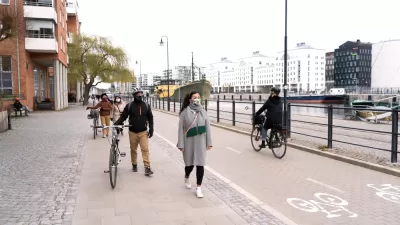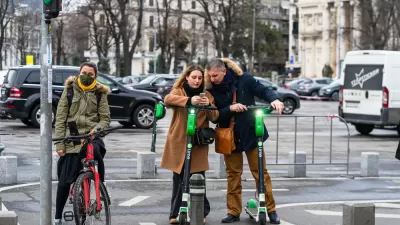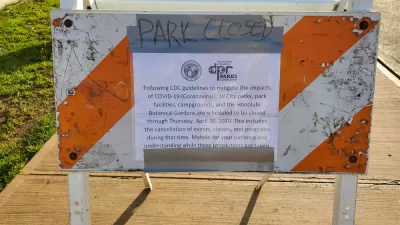When it comes to containing the spread of the deadly coronavirus, China and Italy are demonstrating the use of lockdowns and quarantines. South Korea has gone a different route, using widespread testing administered in drive-through facilities.

"In South Korea, the authorities are reporting a steady downtick in confirmed coronavirus cases over the past week after a series of decisive actions," writes Josh Rogin, a columnist for the Global Opinions section of the Washington Post on Wednesday, March 11.
South Korea’s most effective weapon against the virus has been to rapidly expand testing. It is are now testing 15,000 people a day, according to government figures; 210,000 South Koreans have been tested since Jan. 3, compared to about 6,500 tests completed in the United States by Tuesday morning.
South Korea’s testing, of course, caused a spike in confirmed cases, which number 7,513 as of Tuesday. But they report only 54 deaths, a mortality rate of 0.71 percent.
Worldwide tracking by Johns Hopkins University shows 7,869 confirmed cases and 66 deaths as of Thursday, March 12. According to the World Health Organization on March 3, "about 3.4% of reported COVID-19 cases have died. By comparison, seasonal flu generally kills far fewer than 1% of those infected."
"The number of daily confirmed cases [in South Korea] has been steadily declining, from 686 on March 2 to just 131 on Tuesday, according to government figures," adds Rogin. While the two-day increase since then was 356, according to Johns Hopkins, it is still far below "the daily increases of 500 or more last week" noted by Yonhap News Agency.
Learning from McDonald's and Starbucks
"South Korea has come up with an innovative way of testing for the novel coronavirus-- and it was inspired by the drive-through counters at McDonalds and Starbucks, officials say," according to a CNN report by Ivan Watson and Sophie Jeong. To experience a drive-through test, including the "really uncomfortable" nasal swab, it's best to watch the two-and-a-half-minute video (above the article) of Watson's test on March 3 at a facility in Goyang, one of Seoul's satellite cities, which he narrates every step of the way.
His very first sentence, "South Korea has more diagnosed cased of coronavirus than any other country outside of mainland China," indirectly reveals how successful the program has been, as it is no longer true. It now has the fourth-highest, behind Italy and Iran, respectively, according to Johns Hopkins.
Watson and Jeong write:
Motorists drive to several stations where nurses in protective plastic suits, masks and face shields register drivers, check their temperatures, and use swabs to take samples from their throats and nasal passages.
Officials say it is safer and faster to test for the virus at the drive-through than in a hospital or health clinic.
"There's less face-to-face contact," said Lee Jae-joon, the mayor of Goyang. "If you operate a testing site indoors, there is concern that suspected patients can infect each other in the waiting room."
"Many drive-throughs at places like Starbucks have come to South Korea," he added, explaining that health officials were inspired to replicate their model.At the drive-through, passengers and drivers go through the entire testing process in a matter of minutes without ever getting out of their cars.
That limits the exposure of frontline workers to the virus, says Lee Eun-sook, a surgeon volunteering at the test site, and means patients aren't able to contaminate a public health facility.
When the drive-through opened on February 26, it was the first of its kind in the country and has tested as many as 384 people in one day.
Results come back within three days, and are sent by SMS.
Rogin, the Washington Post columnist, reports that "[t]he government has deployed 53 drive-through sample collection stations."
Not everyone is tested
The drive-through test begins with the vehicle's occupants "completing a questionnaire about their travel history and symptoms. Only those deemed to be at-risk will be tested."
Those who have visited Daegu, for example, are deemed more vulnerable, as 73% of all coronavirus cases in the country stem from this southern city, according to South Korea's Center for Disease Control and Prevention.
Similarly, those who have links to the Shincheonji religious group in Daegu, connected to more than 50% of cases in the country, are deemed to be at risk.
Watson states at the end of the video that a doctor at a coronavirus crisis center told him that "one of the best lessons that Korea has to offer other countries that are just beginning to deal with the coronavirus are these drive-through test sites because you can process more people quicker and it limits the exposure of the medical professionals to patients who could be carrying the disease."
Additional reading:
- Bloomberg, "Virus Testing Blitz Appears to Keep Korea Death Rate Low," March 4, 2020
Related in Planetizen:
-
Coronavirus Declared a Pandemic. What Does That Mean? March 12, 2020
-
A Nation of 60 Million on Lockdown, March 11, 2020
Hat tip to POLITICO Nightly.
FULL STORY: South Korea shows that democracies can succeed against the coronavirus

Planetizen Federal Action Tracker
A weekly monitor of how Trump’s orders and actions are impacting planners and planning in America.

Congressman Proposes Bill to Rename DC Metro “Trump Train”
The Make Autorail Great Again Act would withhold federal funding to the system until the Washington Metropolitan Area Transit Authority (WMATA), rebrands as the Washington Metropolitan Authority for Greater Access (WMAGA).

The Simple Legislative Tool Transforming Vacant Downtowns
In California, Michigan and Georgia, an easy win is bringing dollars — and delight — back to city centers.

The States Losing Rural Delivery Rooms at an Alarming Pace
In some states, as few as 9% of rural hospitals still deliver babies. As a result, rising pre-term births, no adequate pre-term care and harrowing close calls are a growing reality.

The Small South Asian Republic Going all in on EVs
Thanks to one simple policy change less than five years ago, 65% of new cars in this Himalayan country are now electric.

DC Backpedals on Bike Lane Protection, Swaps Barriers for Paint
Citing aesthetic concerns, the city is removing the concrete barriers and flexposts that once separated Arizona Avenue cyclists from motor vehicles.
Urban Design for Planners 1: Software Tools
This six-course series explores essential urban design concepts using open source software and equips planners with the tools they need to participate fully in the urban design process.
Planning for Universal Design
Learn the tools for implementing Universal Design in planning regulations.
Smith Gee Studio
City of Charlotte
City of Camden Redevelopment Agency
City of Astoria
Transportation Research & Education Center (TREC) at Portland State University
US High Speed Rail Association
City of Camden Redevelopment Agency
Municipality of Princeton (NJ)





























